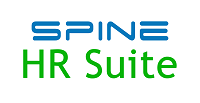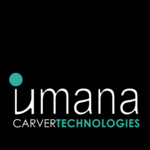Description

Spine Payroll

Umana
Comprehensive Overview: Spine Payroll vs Umana
Spine Payroll and Umana are two distinct products in the realm of Human Resources (HR) and payroll management. Both are designed to streamline and simplify payroll processes, but they cater to different needs and markets. Here's a comprehensive overview of each:
a) Primary Functions and Target Markets
Spine Payroll:
-
Primary Functions:
- Automates payroll processing, including salary calculations, deductions, bonuses, and arrears.
- Manages statutory compliance, ensuring adherence to regional and national tax regulations.
- Provides employee self-service platforms for personal information updates, leave applications, and pay slip viewing.
- Offers integration with other HR modules like attendance and leave management.
-
Target Markets:
- Small to medium-sized enterprises (SMEs) looking for cost-effective, reliable payroll solutions.
- Organizations in need of a localized solution, as Spine Payroll is usually tailored to specific regional requirements and compliance needs.
Umana:
-
Primary Functions:
- Comprehensive Human Capital Management (HCM) system combining HR management and payroll functions.
- Core functionalities include talent management, performance appraisal, time and attendance tracking, along with payroll.
- Advanced reporting and analytics tools for strategic HR decision-making.
-
Target Markets:
- Mid-to-large enterprises seeking an integrated HR and payroll solution.
- Organizations that require sophisticated HR functionalities beyond payroll, including sectors like healthcare, education, and government.
b) Market Share and User Base
-
Spine Payroll:
- Tends to have a strong foothold in localized markets where industry-specific compliance and payroll needs are more pronounced.
- Generally favored by smaller businesses, resulting in a more niche user base compared to global HR solutions.
- It may not hold a significant share in the global market but maintains a competitive edge in regional markets.
-
Umana:
- More widely adopted across various industries due to its comprehensive nature and modular approach, which can be tailored to organization-specific requirements.
- Tends to have a more substantial market presence in regions where there is a demand for extensive HCM solutions with robust reporting and analytics capabilities.
- Often used by larger corporations with complex HR needs, translating into a broader user base.
c) Key Differentiating Factors
-
Spine Payroll:
- Localization: Strong emphasis on compliance with local labor laws, making it ideal for companies that operate under specific regional standards.
- Cost-Effectiveness: Usually more affordable for SMEs that need a straightforward payroll system without extensive HR functionalities.
- User-Friendly Interface: Often simpler and easier to navigate due to its focus on payroll.
-
Umana:
- Comprehensive HCM Suite: Includes extensive HR features beyond payroll, such as performance management, talent acquisition, and employee engagement tools.
- Customization and Scalability: Highly customizable to meet the unique needs of larger organizations, with the ability to scale as the business grows.
- Advanced Analytics: Provides powerful insights and analytics tools for data-driven HR strategies, appealing to organizations focused on enhancing workforce productivity.
In summary, while both Spine Payroll and Umana serve payroll needs, their additional functionalities, target markets, and differentiating factors position them distinctly in the HR/payroll software landscape. Spine Payroll is tailored more towards localized, smaller-scale implementations, whereas Umana addresses the complex, strategic needs of larger enterprises with its full HCM capabilities.
Contact Info

Year founded :
Not Available
Not Available
Not Available
Not Available
Not Available

Year founded :
2006
Not Available
Not Available
Argentina
Not Available
Feature Similarity Breakdown: Spine Payroll, Umana
When comparing payroll and HR management software like Spine Payroll and Umana, it's important to note that both tools aim to streamline HR operations, though they might cater to slightly different market segments or specialize in varying aspects of payroll and HR management. Here's a breakdown of their features and comparisons:
a) Core Features in Common
-
Payroll Processing: Both Spine Payroll and Umana offer robust payroll management systems that automate salary calculations, deductions, tax computations, and salary disbursements.
-
Compliance Management: They include tools to help businesses comply with local employment laws and tax regulations, ensuring that all statutory requirements are met.
-
Employee Self-Service Portals: Both systems typically provide portals where employees can view their payslips, tax information, submit leave requests, and update personal details.
-
Leave and Attendance Management: Features for tracking leave balances, approvals, and attendance monitoring are generally present in both software offerings.
-
Reporting and Analytics: Comprehensive reporting capabilities to gain insights into payroll expenses, employee attendance, and other HR metrics.
-
Integration Capabilities: Both platforms usually offer integrations with other enterprise systems such as accounting software, ERPs, and time-tracking systems to streamline operations.
b) User Interface Comparison
The user interface (UI) of payroll and HR systems can often be a decisive factor for ease-of-use and productivity.
-
Spine Payroll: Known for its intuitive and straightforward design, Spine Payroll typically focuses on simplicity, making it easier for non-technical users to navigate and utilize the system effectively. It presents data in an organized and accessible manner, emphasizing efficient workflows.
-
Umana: Generally provides a more customizable interface that might cater to businesses looking for detailed configurability options. This can sometimes result in a slightly steeper learning curve compared to more straightforward systems like Spine Payroll, but it enables more detailed management for those who require it.
c) Unique Features
-
Spine Payroll:
- Mobile App Access: Spine Payroll may offer more advanced mobile functionalities, allowing users to access payroll features on the go, which is ideal for businesses with remote or mobile workforce needs.
- Industry-Specific Solutions: Often offers solutions tailored to specific industries, providing modules suited for sector-specific payroll and HR requirements.
-
Umana:
- Advanced Analytics: Umana might provide more advanced analytics tools that offer deeper insights into HR and payroll data, suitable for organizations that prioritize data-driven decision-making.
- Comprehensive HR Suite: Umana may be part of a broader HR suite offering extensive HR management features beyond payroll, such as talent management, performance tracking, and recruitment features.
Both products are robust in their own right but cater to slightly different needs and business environments. It's crucial for businesses to evaluate their specific requirements and workflow to choose the most suitable tool.
Features

Not Available

Not Available
Best Fit Use Cases: Spine Payroll, Umana
Spine Payroll and Umana are both payroll and human resource management systems that cater to different business needs and scenarios. Here’s a detailed comparison of their best fit use cases:
Spine Payroll
a) For what types of businesses or projects is Spine Payroll the best choice?
-
Small to Medium Enterprises (SMEs): Spine Payroll is often favored by SMEs due to its ease of use, affordability, and efficient processing capabilities. It provides a rich feature set without overwhelming smaller HR teams or business owners with complexity.
-
Industries with Simple Payroll Needs: Businesses with straightforward payroll requirements, such as those in retail, hospitality, or small service sectors, can benefit from Spine Payroll’s streamlined processes.
-
Companies Needing Quick Implementation: Organizations looking for a rapid deployment of payroll solutions often choose Spine Payroll because of its relatively easier setup process and user-friendly interface.
-
Enterprises Looking for Cost-Effective Solutions: Companies that are budget-conscious and seeking a reliable payroll solution without extensive customization might find Spine Payroll more suitable.
d) How does Spine Payroll cater to different industry verticals or company sizes?
Spine Payroll caters to a wide range of industries by providing essential payroll functionalities like tax calculations, compliance, leave management, and reporting. It is particularly aligned with industries that do not require highly specialized payroll configurations. Its scalability allows small businesses to manage payroll efficiently as they grow, although it might still be limited for extremely large organizations with highly complex structures.
Umana
b) In what scenarios would Umana be the preferred option?
-
Large Enterprises and Midsize Companies: Umana is optimal for larger organizations that require comprehensive payroll and HR management solutions, capable of handling complex workforces and extensive data.
-
Businesses Requiring Customization: Organizations that need heavily customized HR processes or have unique payroll rules and compliance requirements may prefer Umana for its flexibility and adaptability.
-
Multi-National Corporations: Companies operating across different countries with varied compliance requirements can benefit from Umana’s ability to handle multiple currencies, languages, and tax systems.
-
Industries with Complex HR Needs: Sectors such as manufacturing, finance, or healthcare that have intricate employee management requirements might find Umana more aligned with their needs due to its robust HR capabilities.
d) How does Umana cater to different industry verticals or company sizes?
Umana is designed to offer deep customization and integration options, making it suitable for a variety of industry verticals. It supports comprehensive HR modules, such as talent management, performance evaluations, and benefits administration, which are essential for industry-specific needs. Its scalability means it can efficiently serve midsize to large enterprises, managing complex organizational structures and diverse employee data.
Conclusion
In summary, Spine Payroll is ideal for SMEs and businesses with straightforward payroll needs that prioritize ease-of-use and cost-effectiveness. Umana, on the other hand, is more suited for larger companies, particularly those with complex HR requirements, seeking deep customization and international compliance capabilities. Understanding the specific needs of the organization and the complexity of their payroll and HR processes is critical in choosing between these two products.
Pricing

Pricing Not Available

Pricing Not Available
Metrics History
Metrics History
Comparing undefined across companies
Conclusion & Final Verdict: Spine Payroll vs Umana
To provide a well-rounded conclusion and final verdict regarding Spine Payroll and Umana, it is essential to evaluate both products based on several critical factors such as features, pricing, user experience, customer support, and scalability. Here is an analysis that encompasses all these aspects:
a) Best Overall Value
Best Overall Value: While both Spine Payroll and Umana offer robust solutions, the choice of the best overall value largely depends on the specific needs and context of the user. However, generally, the product that combines comprehensive features with competitive pricing and strong customer support tends to offer the best value.
Spine Payroll: Known for its user-friendly interface and specialized functionalities tailored for payroll processing, Spine Payroll often appeals to smaller and mid-sized businesses looking for straightforward payroll management with essential HR features.
Umana: Offers a comprehensive suite that integrates payroll with extensive HR functionalities, making it suitable for organizations that need a more holistic human resource management system. Larger enterprises and those requiring extensive customization might find Umana's offerings more aligned with their needs.
b) Pros and Cons
Spine Payroll:
Pros:
- User-friendly and easy to set up for small to mid-sized businesses.
- Offers highly specialized payroll features.
- Competitive pricing for core payroll functionalities.
- Efficient customer support with a focus on payroll issues.
Cons:
- Limited HR functionalities compared to more comprehensive HRMS.
- Scalability might be an issue for rapidly growing companies.
- Customization options can be limited.
Umana:
Pros:
- Comprehensive HR and payroll features suitable for larger organizations.
- High scalability with advanced customizations.
- Integrated HR analytics and reporting tools.
- Provides a holistic approach to human resource management.
Cons:
- May have a steeper learning curve due to the wide array of features.
- Potentially higher cost, especially for smaller companies.
- Implementation might require more time and resources.
c) Recommendations for Users
-
Assess Needs: Users should begin by thoroughly assessing their organizational needs. Smaller businesses or those primarily focused on payroll might prefer Spine Payroll for its simplicity and cost-effectiveness. In contrast, organizations with complex HR operations would benefit from Umana’s comprehensive features.
-
Budget Consideration: Budget constraints play a significant role. Smaller organizations or startups might initially opt for Spine Payroll due to lower costs, whereas larger enterprises with sufficient budget allocations may find Umana’s advanced functionalities justify the expense.
-
Growth and Scalability: Consider future growth. If an organization anticipates significant expansion or diversification of HR needs, Umana might offer a more sustainable long-term solution due to its scalability.
-
Trial and User Feedback: Take advantage of free trials or demos to get a hands-on feel of each system. Additionally, seeking user feedback and reading reviews can provide insights into real-world applications and support experiences.
-
Integration Needs: Evaluate any existing systems and consider integration capabilities. If seamless integration with existing tools is crucial, ensure the chosen software aligns with these requirements.
Final Verdict
Both Spine Payroll and Umana serve different niches within the market. For organizations that need a straightforward, cost-effective payroll solution with minimal HR integration, Spine Payroll may be the best choice. However, for those requiring a comprehensive HR management system that supports extensive customization, scalability, and integration, Umana might offer better overall value. Ultimately, the decision should be made based on specific organizational requirements, future growth plans, and budgetary considerations.
Add to compare
Add similar companies




